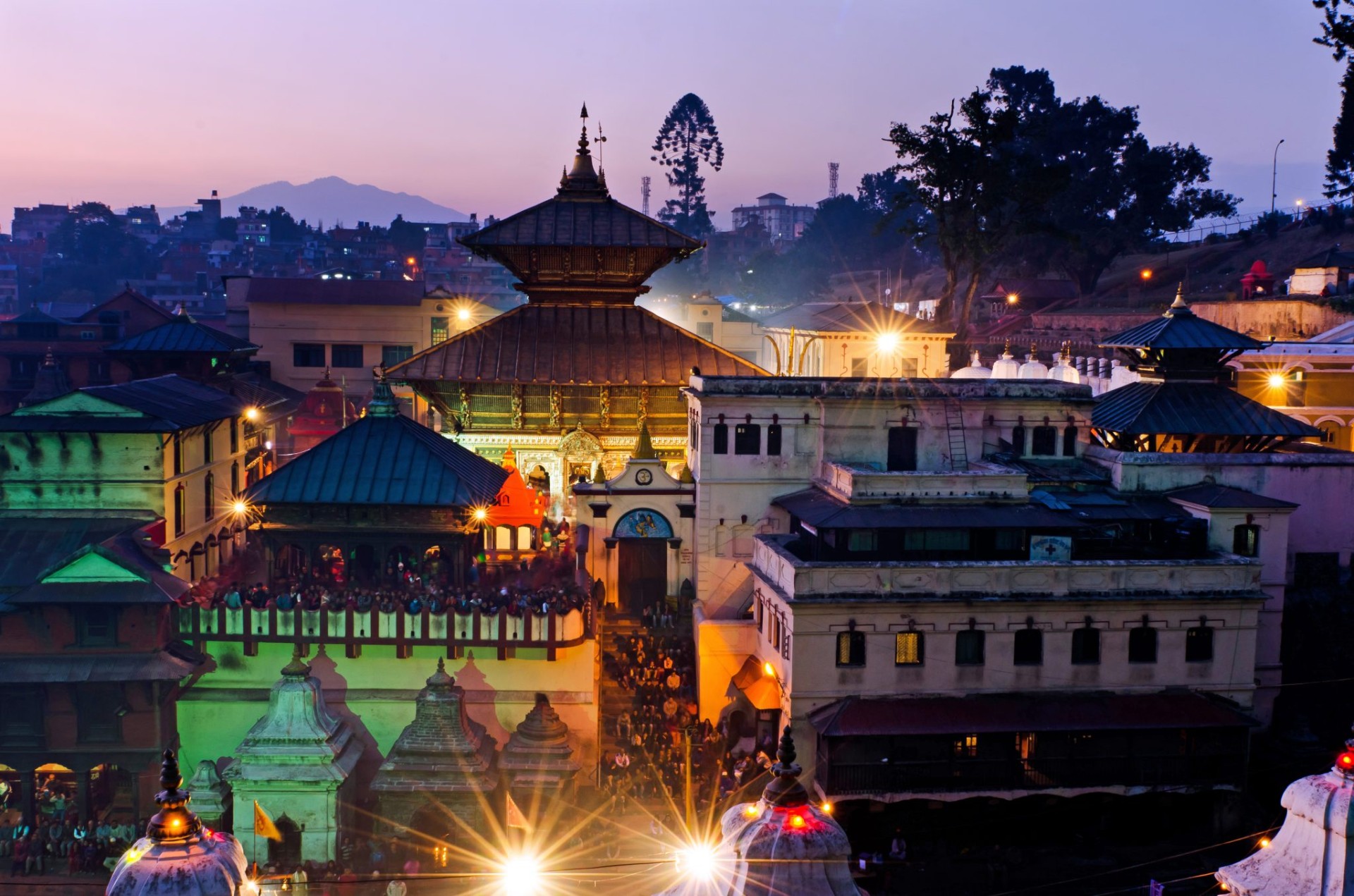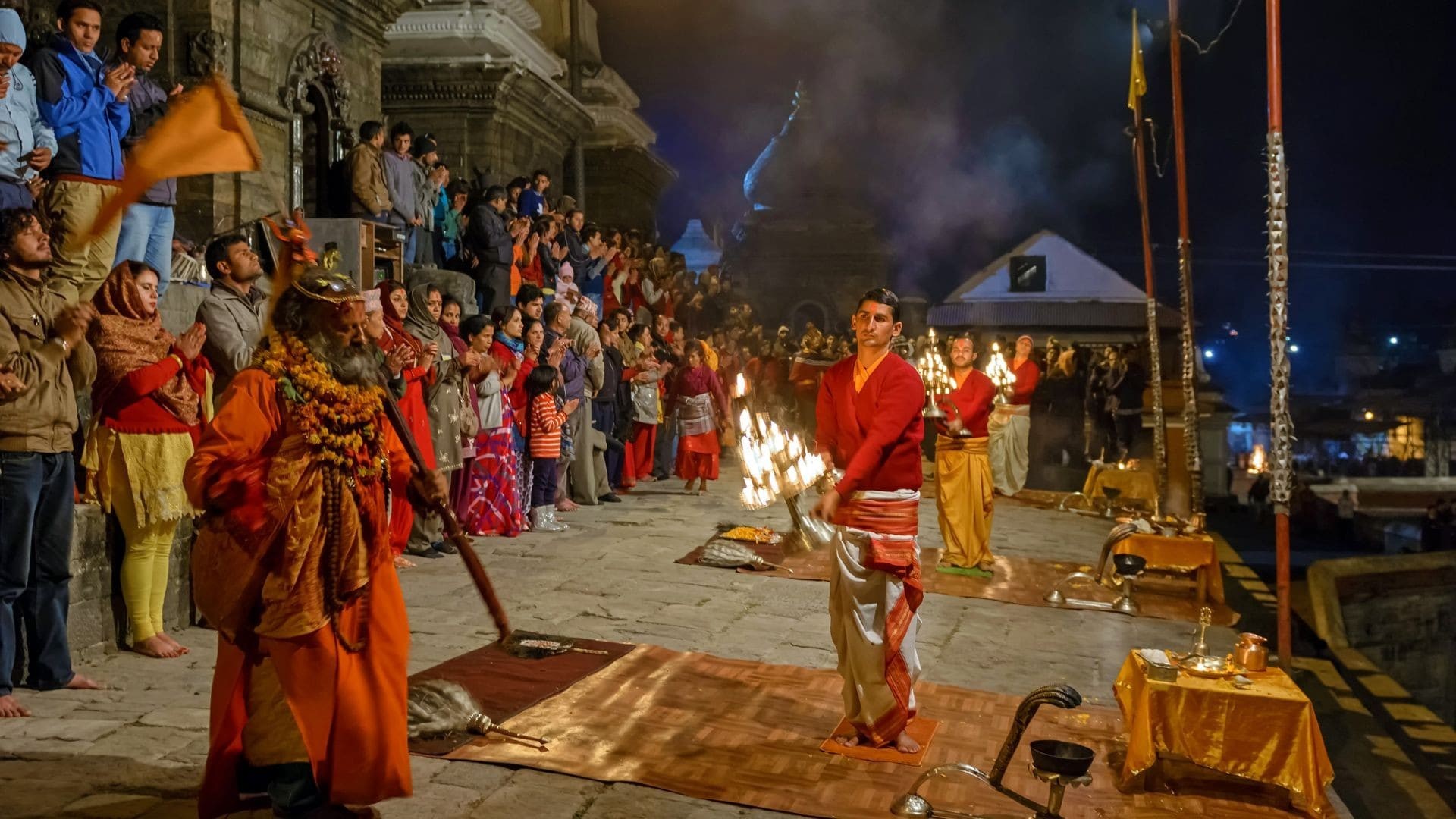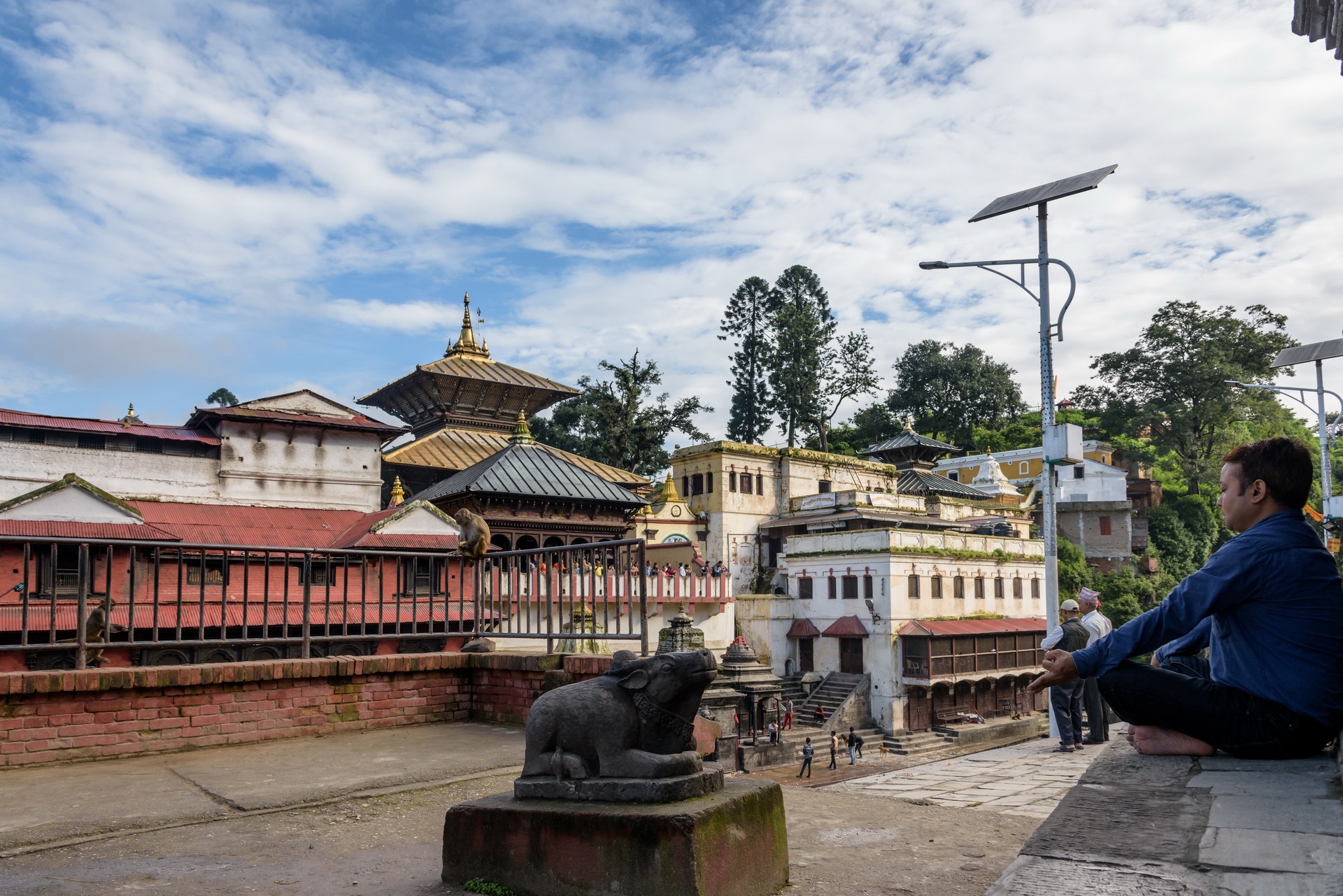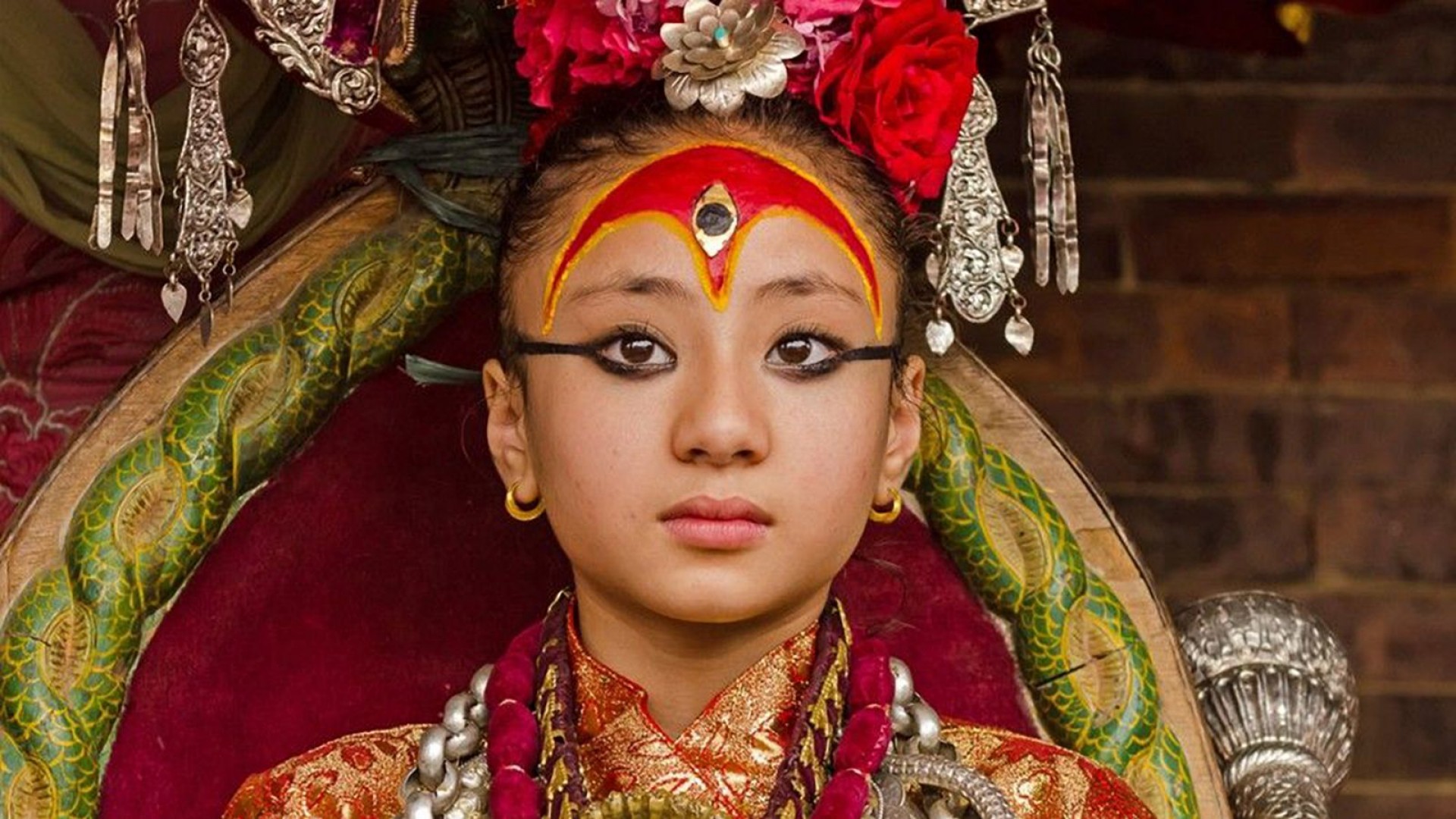-
Places to go
-
Things to do
-
Adventure
Nature
Culture
Wellness
Others
-
-
Festivals & Events
-
Festivals
Event Calendar
-
-
Plan Your Trip
-
Trip Ideas
Travel Details
Book Your Trip
-
- Travel Updates
Discover the Divine Aura Pashupatinath
Pashupatinath is the spiritual capital of Kathmandu, which is more than just a religious destination. It is a combination of religion, art, and culture, which is a site for self-discovery, renewal and healing. With the biggest Hindu festival Maha Shivaratri just around the corner, it is the perfect time to visit Pashupathinath.
Surrounded by green hills and located on the bank of the holy Bagmati River, the temple, dedicated to the supreme God Lord Shiva, is steeped in the legends of sages and mystics. Spread across 246 hectares of land filled with dozens of other temples, monuments and ashrams, the Pashupatinath site reflects as an open museum. It exudes a palpable aura of divinity and introspection.
This national treasure was designated a UNESCO World Cultural Heritage Site in 1979 attracting Hindu devotees from across the world, while the site has been a refuge for seekers of inner peace and enlightenment. Kathmandu is a blend of nature, culture and spirituality where Pashupatinath Temple compliments it as a captivating destination. Pilgrims believe that visiting this sacred site and offering prayers can bestow profound spiritual blessings and liberation from the cycle of birth and death.

Maha Shivaratri
Pashupatinath is a pilgrimage destination, which remains crowded throughout the year as It is a timeless site for seekers of spirituality and introspection. It holds a rich mythological heritage dating back to hundreds of years. Devotees throng to the main temple to have a glimpse of the sacred Shiva lingam situated inside the four huge silver doors and offer prayers in devotion to Lord Shiva. It is believed that paying homage to it can bring a great boon and a successful life to mankind.
However, visiting it during the Shivaratri festival is more special as It is the Great Night of Shiva, celebrated on the 14th day of Magh month, as per the Hindu lunar calendar. The day represents the marriage of Lord Shiva with Parvati, while it also has various mythical stories behind it. It is the day for worshipping the Lord Shiva with great devotion and dedication.
Decorated with flowers and lights all over the premise, the complex smells of wood apple leaves, milk and flowers during the festival as they are regarded as the Lord’s favourites. On this day, devotees observe fasting and chant Sanskrit prayers (like Mahamritunjaya) and hymns all night long, marking the overcoming of darkness and ignorance. Devotees keep vigil, chant prayers, fast, do yoga, meditate or recite prayers to Shiva or engage in spiritual discourses.
Sadhus, saints and Babas from the corners of India throng the temple for days, creating a unique atmosphere and vibe on the site. Besides, there are also musical concerts and other spiritual activities organized to cater the visitors and foreign tourists. For instance, the Kirateshwar Mahadev Temple organizes the full-moon classical music concert consisting of soothing music with classical instruments and vocals. There is a peaceful atmosphere when music takes over.

Temples and Ashrams
Pashupatinath Temple site is an important destination for art historians from across the world. It displays a variety of temple designs, some of which are Dome style, Pagoda style, Shikhara style and so on. The main temple is an architectural marvel and one of the most significant religious sites for Hindu devotees.
However, there are varieties of other temple structures, statues, ashrams, ghats and sculptures around the complex. There are ancient statues made out of stone, metal, and wood. There are intricate details in each corner of the site, as structures, doors and pillars around the temple area are carved in beautiful shapes of God and griffins.
Pashupatinath Chhetra stretches from the main temple of Pashupatinath to the Guheshwori temple. There are many famous temples inside the area including the Bhuwaneshwori, the Dakshinamurti, Tamreshwor, Panchdewal, Bishwarupa, and others. Each temple has its own set of rituals to be performed, and every temple has specific values and customs.
Every corner of Pashupatinath Chhetra has a temple, either big or small, and each one of them has specific rituals that the priests conduct on a regular basis. You will have an amazing time exploring these corners and learning about history and religion.

Sacred Rituals and Activities
Pashupatinath is also known for its vibrant Aarati ceremony every evening at Bagmati Ghat, adding a spiritual aura to the city. It is one of the most mesmerizing rituals that is witnessed by the visitors. Aarati is considered as the highest form of prayer and is a ritual of worship in which light from wicks soaked in ghee (purified butter) is offered to God. It follows three priests conducting the custom with oil lamps, lanterns and other religious elements by chanting sacred mantras.
The hour-long mantras and bhajans performed during Aarati are powerful enough to take one into a meditative state. It is believed that prayers are sung for the betterment of the whole of humanity and coming together as one is the main aim of Aarati. The end of the Aarati is marked by hailing for the wellness of every living soul and thanking God for the kindness bestowed by him.
In addition, the burning pyres in the Bagmati ghat on the other side compel the visitors to contemplate beyond the physical world at the same time. A divine dance form performed by Lord Shiva which is known as “Tandav” is also performed by some followers at the Aarati. Especially on Mondays, holy month of Shrawan and during festivals like Maha Shivaratri, the number of visitors soars higher to witness the magical Aarati ceremony.
There are many rituals and activities which make the site a hub of learning and philosophical exploration. Devotees get many options to perform sacred rituals and connect with the divine. With the echoes of bhajans, mantras and prayers, the scene captivates hearts with a sense of transcendence.
Pashupatinath Temple site is much more than these experiences. It is a place where people seek inner peace and a connection to the universal consciousness. Come, visit Pashupatinath Temple during Maha Shivaratri and discover the ethereal realm of spirituality.

Nepal Tourism Board is a national tourism organization of Nepal established in 1998 by an Act of Parliament in the form of partnership between the Government of Nepal and private sector tourism industry to develop and market Nepal as an attractive tourist destination. The Board provides platform for vision-drawn leadership for Nepal’s tourism sector by integrating Government commitment with the dynamism of private sector.



